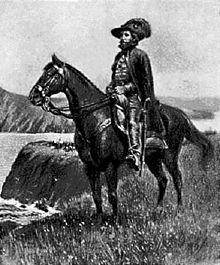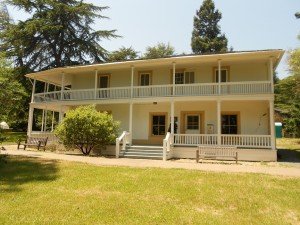There is a very historic old Spanish trail that eventually established what is today San Francisco California, the historic Mission Dolores and the Presidio. Today, this trail is administered by the National Park Service through a partnership with other federal, state, county and municipal parks and volunteer groups. Some of the areas of this Spanish trail are in the hands of private ownership but there is a remarkably large amount of the trail that is ideal for a California auto tour. In 1990, Congress established the Juan Bautista de Anza National Historic Trail as a part of the National Trails System.
Thank you for reading this post, don't forget to subscribe!
This very important Spanish trail was blazed by a Spanish military officer by the name of Juan Bautista de Anza. Ther idea actually originated with Anza’s father who dreamed of finding an overland route to Alta California. This was an important route for Spain who was trying to secure their stronghold in the region. Spain’s concerns were the explorations of both the Russians and the English. The Russians had a thriving trade operation in the area about 100 miles north of San Francisco Bay at Fort Ross on the Pacific coast. The English of course had operations in what is today Oregon at the mouth of the Columbia River.
Using mission and Indian trading routes, Juan de Anza found a path into Alta California in 1774. This route would allow passage of supplies, livestock and much needed settlers. When Anza identified the route he secured permission from the Viceroy of New Spain to make the Spanish expedition.
Juan Bautista de Anza’s expedition was quite different from a mere exploration. Some of the earlier expeditions were for simple exploration. This expedition was to help colonize a distant land. This essentially went hand in hand with the Spanish Mission system being established around the same years. Traveling through Sonora New Spain, Anza put out a call to men to join him and be paid as soldiers. His men told about the lush land to the north which was greatly different than the desert region around Sonora. Interest was high but Anza placed certain requirements to many of the prospective recruits. There were two primary conditions. The men would agree not to return to New Spain and they were obligated to bring along their families.

Anza’s expedition departed from Tubac Presidio on October 23, 1775. The expedition included thirty families which amounted to some 240 men, women and children. The expedition had a purpose. The purpose in general was to safely deliver the settlers and their livestock to el Rio San Francisco, the first Spanish settlement in that key area. There was no guarantee of success but the travelers put their full faith in Anza. The families who joined the expedition, after weighing their current opportunities in Sonora, felt strongly that a better life could be found in Alta California. They risked everything for a chance to be among the very first settlers to California.
As with just about all Spanish expeditions, religion and the Franciscans played a large role. Most days began with Mass and hymns of praise. These were conducted by Franciscan priest Pedro Font. In addition to Font’s religious duties, he kept a very detailed diary and recorded latitudes using a quadrant. His journals were a running historic record recording locations, miles traveled and supplies used. It is from his diary and one written by Anza himself that today we have an excellent record of the Anza expedition. Coming up from present day Mexico around the Nogales area, the expedition which included some 1,000 head of cattle crossed the Colorado River into Alta California at present day Yuma Arizona. Anza was fortunate to have received able help from the local Indians and this included finding the Yuma Crossing. The trail went through Riverside and north of present day Los Angeles to the coast near Oxnard. Then it was up the Pacific coast past San Luis Obispo and to the east of Monterey before reaching present day San Francisco. Much of the route fairly follows US Hwy 101. It’s interesting that riders on Amtrak’s Coast Starlight train from Los Angeles to Oakland also follow a section of this trail.

The Juan Bautista de Anza expedition was a great success for Spain. After Juan de Anza selected a site for both a presidio and a Spanish mission, on June 27, 1776 a Lt. Moraga led the settlers to what is today the city of San Francisco. This marked the establishment of Mission Dolores on the San Francisco peninsula. This also marked the very northernmost settlement to that date for Spain. What’s very interesting to the tourist is that many of the names of settlers and military involved with Juan de Anza’s expedition are still seen today throughout northern California. These are names such as Moraga, Berryessa, Bernal and Peralta. Today, these are names of towns, highways, landmarks and counties. De Anza’s name can be found on buildings, schools and streets.
The National Park Service has sixteen sites along the de Anza Trail where many visitors like to collect stamps showing their visit. These stamps are given out by the NPS to officially confirm the visit. The National Park Service administers the Anza Historic Trail Exhibit Visitor Center located at John Muir National Historic Park in Martinez California. This is the historic adobe on the Muir grounds that has been made into the Anza Historic Trail Center. This center has some great exhibits and would be a fine addition to any san Francisco area trip planner. Martinez is located northeast of San Francisco opposite the town of Benicia California.
